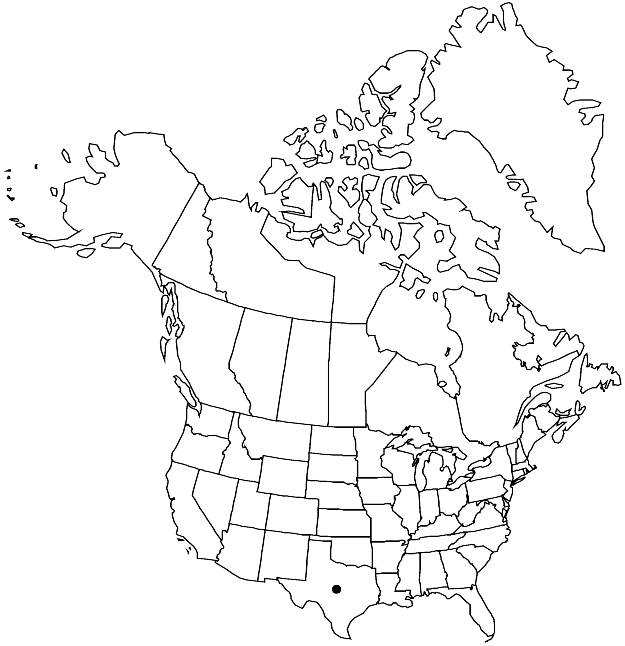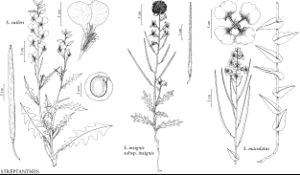Streptanthus cutleri
Rhodora 45: 259. 1943.
Annuals; glabrous throughout. Stems (simple from base), usually branched distally, 2–7 dm. Basal leaves subrosulate; petiolate; blade oblanceolate, 2.5–20 cm, margins runcinate-pinnatifid. Cauline leaves (petiolate); blade oblanceolate, 4–20 cm × 10–70 mm, (smaller distally), base not auriculate, margins runcinate-pinnatifid (undivided, usually entire distally). Racemes ebracteate, (lax). Fruiting pedicels divaricate-ascending, (5–) 10–27 mm. Flowers (strongly zygomorphic); calyx campanulate; sepals (ascending), dark purple, 8–12 mm, not keeled; petals lavender to purple-lavender, (in 2 unequal pairs), abaxial pair undifferentiated into blade and claw, 5–6 mm, margins crisped, adaxial pair 15–26 mm, (not crisped), claw 7–11 mm, crisped, narrower than blade; stamens in 3 unequal pairs; filaments distinct: abaxial pair 6–7 mm, lateral pair 3–5 mm, adaxial pair 8–12 mm; anthers: abaxial and lateral pairs fertile, 4–5 mm, adaxial pair fertile, 3–3.5 mm; gynophore 0.2–0.5 mm. Fruits ascending, smooth, straight, strongly flattened, 3.2–7.5 cm × 4–5 mm; valves each with prominent midvein; replum straight; ovules 30–46 per ovary; style 0.2–0.5 mm; stigma 2-lobed. Seeds orbicular, 3–4 mm diam.; wing 0.5–1 mm wide, continuous.
Phenology: Flowering Feb–Apr.
Habitat: Talus slopes, rocky hillsides, gravelly and dry stream beds, sand flats, limestone slopes, open scrub or woodland
Elevation: 400-700 m
Distribution

Tex., Mexico (Coahuila)
Discussion
Of conservation concern.
In Texas, Streptanthus cutleri is restricted to the Big Bend area in Brewster County.
Selected References
None.
Lower Taxa
"elongated" is not a number."thick" is not a number."dm" is not declared as a valid unit of measurement for this property.
